As a postscript to my post about fluorescence, here are red, green and blue Ultrafire 501Bs attempting to create white:
They actually do a decent job of it if you just hold them together in a bunch, or hold one in each hand and one in your mouth so you can aim the light all into one pool, like the old EternaLight Rave'n:
Any one of the coloured Ultrafires makes a decent flashlight all by itself. Red if you're feeling sexy, ominous or both, green for maximum visibility, blue for a particularly unearthly look, including that unexpected fluorescence. I really do highly recommend them. Why use a boring white flashlight when you can have something fun instead?
(They also partner well with my...
...elderly "bullseye" flashlight. It's excellent for seeing where you're about to step at night with dark-adapted eyes; the much narrower and far brighter beams of the Ultrafire lights are great for seeing things further away.)
Coloured flashlights are completely unsuitable for some tasks, like reading maps; shine a red light on a multi-coloured map and any markings with no red in 'em will look black. For everyday flashlight tasks, though, why not do it the sci-fi B-movie way?
You can get these lights on eBay for $US9.99 delivered for just a lamp to put into any Ultrafire-or-other-branded SureFire clone, or for less than $US15 delivered for a whole flashlight with coloured lamp. As I said in the fluorescence post, a red, a green and a blue Ultrafire 501B, plus three 18650 lithium cells to power them and a charger, will only cost you about $US50 delivered, for the lot. Pretend you're getting them to educate your kids about additive and subtractive colour, if it helps.
Now I'm going to have to get an infrared and an ultraviolet one, too. Infrared Ultrafires sell for $US20 to $US30 delivered, and their beam will be clearly visible to any digital camera that doesn't have a good IR-cut filter in front of the sensor.
Actually, even cameras that do have such a sensor can see near-IR...
...but only with a long exposure that'll blur moving subjects:
You could cut the exposure time down quite a lot by lighting a small target with a high-powered IR LED flashlight like this, or using a dedicated IR flash (expensive) or a filter on a conventional flash. But you probably still won't be able to use a properly fast motion-stopping shutter speed unless you've got a camera with no IR filter, or make one yourself. (Or pay someone else to make one for you, complete with tweaking the autofocus so it works properly in the new waveband, but that's cheating.)
Ultraviolet Ultrafire flashlights cost little more than the visible-light ones, but the cheap UV models are barely UV at all. They emit a purple light with a wavelength up around 400 nanometres; this excites fluorescence in various objects quite well...
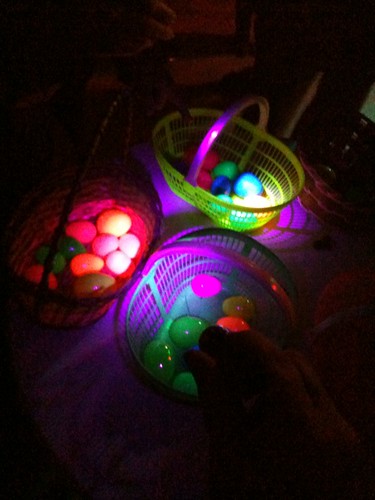
(Image source: Flickr user davecobb)
...but is clearly visible to the naked eye.
"True" UV LEDs exist too; they have an output wavelength of 370 nanometres or less. (I reviewed a Photon key-ring 370nm light years ago, here.) 370nm light is still visible to the naked eye, but is now a faint white (it's not a great idea to stare down the barrel of a bright near-UV LED flashlight, by the way). As the wavelength gets shorter, the visibility of the light from the LED itself, as opposed to whatever fluorescence it excites in other objects, fades away.
Searching for Ultrafire lights with "nm" in the listing currently turns up an alleged 365nm flashlight for $US19.96 delivered.
Buy one, before someone in government discovers that staring into the beam for minutes on end can damage your eyes, and bans them!
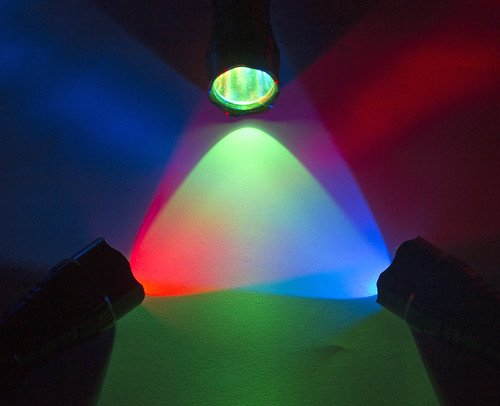
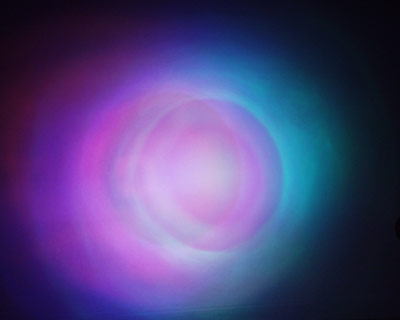
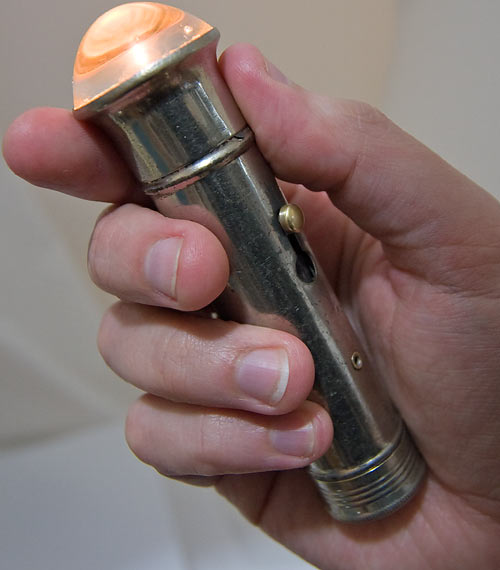
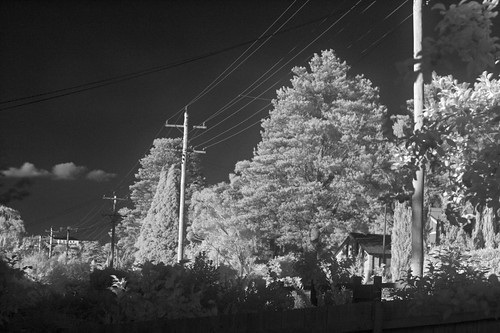
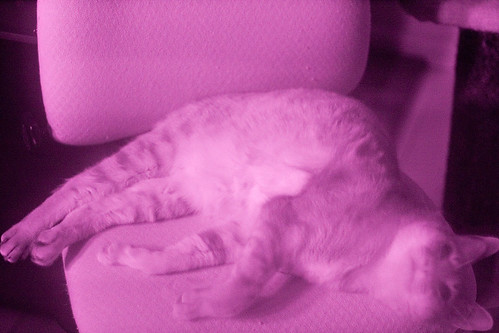
21 September 2012 at 1:06 pm
I got my first Cree flashlight for Christmas last year, and as bright as it is, I've wondered 1) do I really need a flashlight this bright, 2) can I modify it to cut the current down and extend battery life, and 3) would a single-wavelength flashlight (like one of the above) be more efficient, since there's no phosphor coating to excite.
Anyone know what the typical efficiency of the phosphor coating is?
22 September 2012 at 11:44 am
1) Of course! Can anyone not need a lighthouse in the palm of their hand?
However, if the question is instead "do I need it all the time", then the answer is probably no. A multimode driver will solve that particular problem and will leave intact the ability to amaze your friends if need be.
2) Possibly, depending on the light. Chinese ones are usually easily hackable; other makers sometimes have the annoying habit of potting the circuitry, or threadlocking the pill so tight you can't get it apart without ruining the rest of the light (I'm looking at you, Fenix; thanks for making my L1S un-upgradable!). If you can get at the circuitry and emitter, both can be swapped with more suitable models.
DealExtreme, KaiDomain and several other sources (all of which you can find on candlepowerforums) sell such parts. Beware of drivers with flashing modes you can't disable, as they're useless and get in the way of normal operation.
3) not really. A phosphorless white LED is effectively a blue LED; it'll emit more watts of power per unit of energy, but because the human eye is more sensitive to white than to blue you'll see less of it. It'll be more efficient scientifically, but that's unlikely to do a lot of good to you.
If shooting for damn-everything-else supermassive efficiency green would be the obvious choice, as it's the colour we're most sensitive to; however, because the market for color high-output emitters is tiny compared to that of white ones, much more research has gone in the latter. As a result it's hard (if not completely impossible) to get a green LED that's as efficient as the best whites. And even if you did, the difference would be so small you might as well use white and not feel like you're in a bad scifi movie.
24 September 2012 at 9:52 am
Gah. "More watts of LIGHT per unit of energy".
22 September 2012 at 12:26 am
Dan,
I’m considered to be a bit of a flashlight nut, and have a lot of the flashlight gear you mention. I’ve recently moved to an area where I’m overrun by scorpions, and have purchased a UV P60 drop-in emitter module to hunt for them. On my best evening, I was able to catch ~40 scorpions in my yard. I’ve also found weird tiny mushrooms that fluoresce under the UV light, and moss that glows red under UV…
If you are interested, check out my full thread on the subject:
http://budgetlightforum.com/node/11935
The vendor I purchase from (linked to from that thread) also has IR P60 drop-ins available…
22 September 2012 at 11:47 am
Holy shit O_O
Man, I'd be electrofencing the whole area if I were you. *shudder*
24 September 2012 at 5:03 am
*Frantically pounds nope button*
24 September 2012 at 8:17 am
Do the fluoresce after they're deep fried?